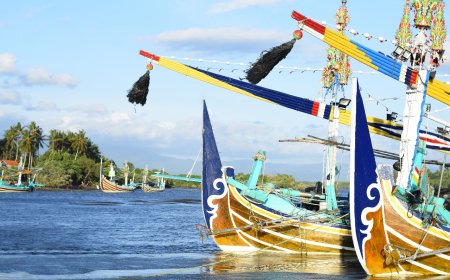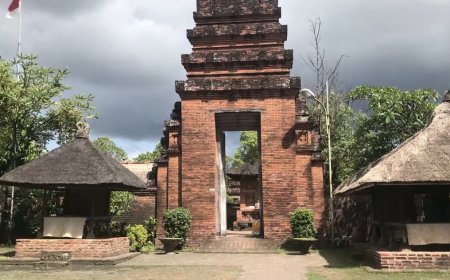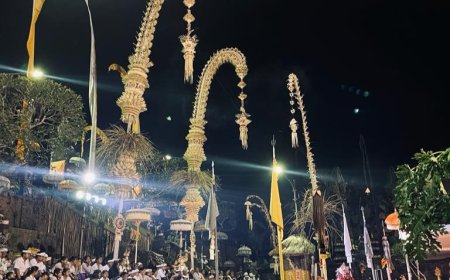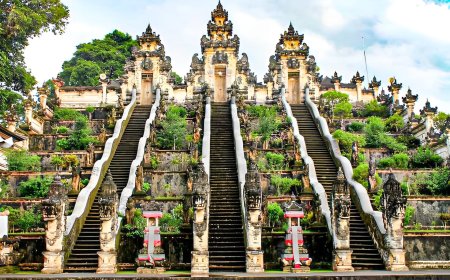Kerta Kawat Temple: Tracing the Long History and Cultural Heritage of Bali
Hidden in the hills of Buleleng, Pura Kerta Kawat radiates an untouched aura. It is said that those who come seeking blessings from Ida Bhatara Hakim Agung often leave with something unexpected. What truly happens behind its grand gates, especially during Purnama Kapat? Only a few know, yet more and more return, searching for answers.
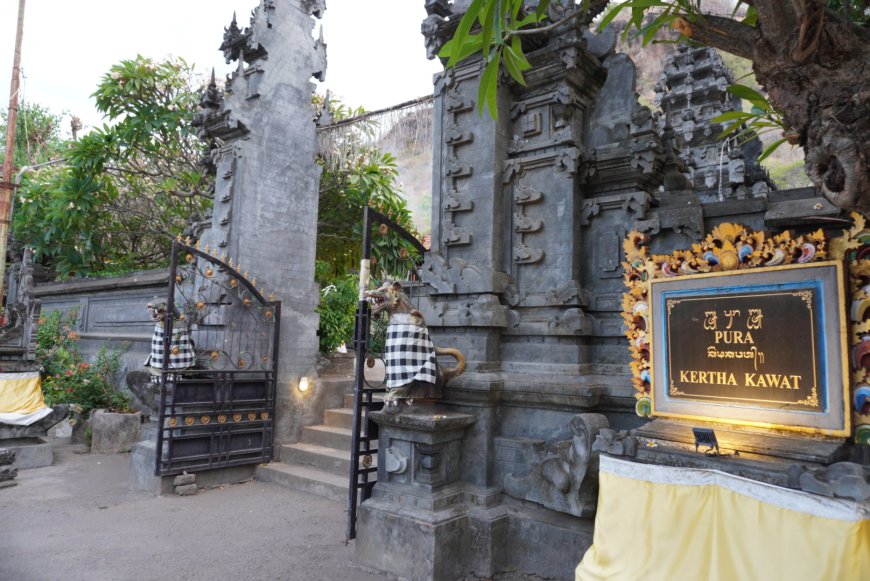
Pura Kerta Kawat is located in Dusun Banyu Poh, Gerokgak District, Buleleng Regency. It is approximately 50 kilometers from Singaraja City and about 30 kilometers from Gilimanuk Harbor, the main entrance for those arriving by sea from Java Island. If you are departing from Ngurah Rai Airport, the journey to Pura Kerta Kawat takes around 3.5 hours. However, despite the long distance, the trip to this temple is filled with natural beauty. Along the way, you will be treated to views of the lush Bedugul forest, complete with playful monkeys, as well as the farmlands and rice fields cultivated by the residents of Seririt and Banjar Districts. All of this makes the journey enjoyable and far from boring.
The location of Pura Kerta Kawat is somewhat remote and a bit distant from the main highway. After finding the directional sign at a three-way junction, visitors only need to walk about 600 meters south to reach the temple. Its position, far from the bustling road traffic, provides a sense of peace for those coming to worship, allowing them to focus without being disturbed by the noise of passing vehicles.
Pura Kerta Kawat has various unique features that set it apart from other temples in Northern Bali. The first notable feature is the Candi Bentar at the front of the temple, a magnificent gate adorned with typical Balinese carvings. Behind this gate, the view of steep and natural hills adds to the dramatic and enchanting atmosphere. This creates a beautiful combination of temple architecture and the pristine natural backdrop.
Another unique aspect is the design of the pelinggihs, or shrines, inside the temple. Although located in Northern Bali, the shrines at Pura Kerta Kawat resemble those found in Southern Bali, which is a rare feature among temples in this region. Additionally, in terms of layout, this temple differs from most Balinese temples, which are typically divided into three sections: jaba pisan (outer courtyard), jaba tengah (middle courtyard), and jeroan (inner courtyard). Pura Kerta Kawat does not have a middle courtyard, so when you enter the temple, you are immediately in the inner courtyard, the most sacred part of the temple.
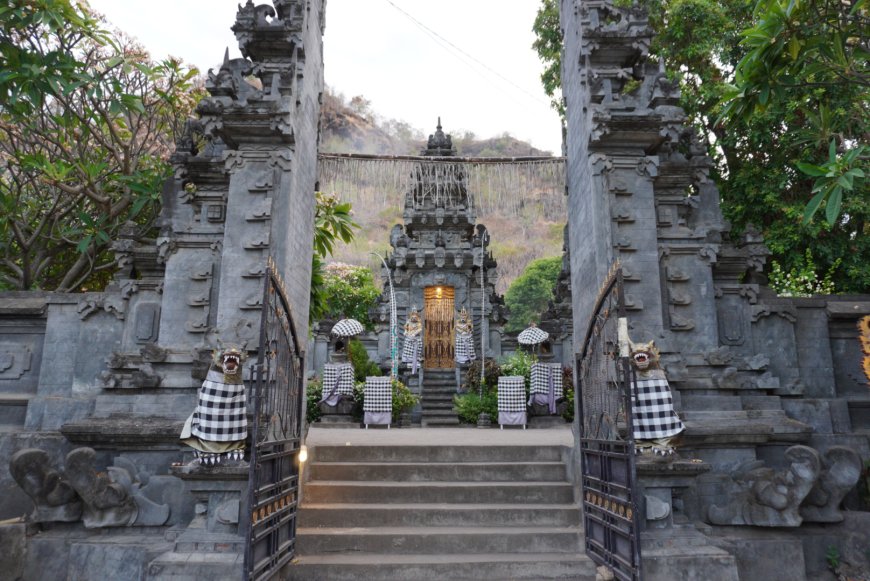
Kerta Kawat Temple (Photo Source: Editor's Collection)
Another element that makes Pura Kerta Kawat special is its spiritual function. This temple is dedicated to the worship of Bhatara I Dewa Mentang Yuda, who is now more commonly known as Ida Bhatara Hakim Agung, a deity believed to bestow prosperity and justice upon the world. As a result, many people, especially those aspiring to or holding positions in government, come here to seek blessings. They believe that besides relying on their own abilities, it is also important to seek divine blessings, guidance, and direction to achieve success in their careers. Government officials often visit this temple to solidify their steps in carrying out their duties.
The rules for entering Pura Kerta Kawat are the same as those for other temples in Bali. Visitors are required to wear modest clothing, including a sarong and sash. Additionally, women who are menstruating are prohibited from entering the temple area, as per the traditions that apply in Hindu sacred sites.
Pura Kerta Kawat is also known for attracting officials and those aspiring for positions. The temple is believed to be a sacred place where visitors can pray for prosperity and justice. Ida Bhatara I Dewa Mentang Yuda, or as he is known, Ida Bhatara Hakim Agung, resides here and is believed to have the power to grant blessings of worldly well-being.
Like Pura Pulaki, Pura Kerta Kawat is one of the legacies of Danghyang Dwijendra, a great spiritual leader from East Java who came to Bali in the 16th century. In Balinese history, Danghyang Dwijendra is known as an important figure in the spread of Hinduism on the island, and Pura Kerta Kawat is one of the places associated with his spiritual journey.
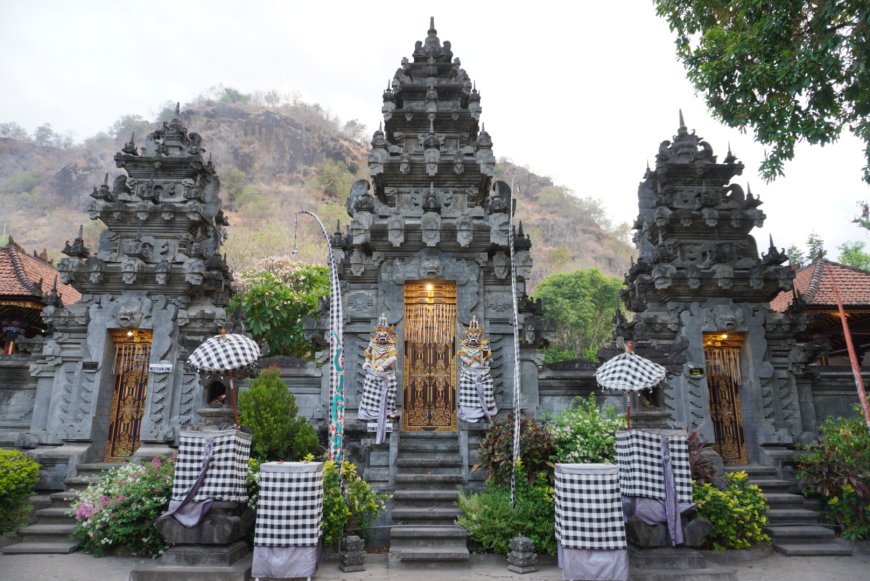
Kerta Kawat Temple (Photo Source: Editor's Collection)
This temple is not only visited by people from Northern Bali but also by residents from Southern Bali, Central Bali, and even visitors from outside Bali. In addition to officials, many people come here to pray for safety and other blessings. The temple is regarded as a suitable place to seek divine guidance, especially for those wanting to ensure their steps in performing duties, whether in government or the private sector. Visitors to this temple feel that expertise alone is not enough to achieve their goals. Therefore, they combine worldly efforts with spiritual endeavors.
However, the existence of Pura Kerta Kawat is still not widely known, and even information from local residents responsible for the temple’s maintenance is limited. The temple is maintained by the villagers from all over the Seririt and Gerokgak Districts, especially those living east of Cekik and west of Tukad Saba. They are responsible for upkeeping the temple and organizing various religious ceremonies held here.
The Piodalan, or major ceremony, at Pura Kerta Kawat is held simultaneously with Pura Agung Pulaki over seven days, with the peak event occurring during the Purnama Kapat. After the ceremony at Pura Pulaki, the ceremony at Pura Kerta Kawat takes place two days later. Additionally, there are several other temples around Pura Pulaki that follow a similar ceremonial schedule.
Overall, although the structures at Pura Kerta Kawat are not many, there is a main shrine that houses Ida Bhatara Hakim Agung. There is also a Padmasana, a shrine for worshiping Ida Bhatara Luhuring Akasa, as well as a Bale Sidang, which is believed to be a place for conducting spiritual hearings.









